Can a Bird Be An Emotional Support Animal?
Yes, a bird can be your emotional support animal (ESA). These feathered friends offer incredible comfort and emotional support. There’s no need for special training. A ESA letter from a licensed mental health professional is all it takes.

Emotional Support Animals (ESAs) are becoming increasingly popular. While dogs and cats are the most common choices, birds are now joining the ranks as one of the newest members of the ESA family. You’re likely familiar with emotional support dogs or cats, but have you ever considered the possibility of emotional support parrots or even peacocks?
Certifying a bird as an ESA may not be very common, but it’s actually quite straightforward. Whether you’re thinking about getting an ESA letter for a bird or just curious about the idea, this article will explore everything you need to know about birds as emotional support animals.
Many people mistakenly believe that birds can’t be emotional support animals, but that’s far from the truth. Birds are incredibly intelligent creatures, capable of adapting well to different environments. Let’s start by discussing why a bird might be the perfect choice as an emotional support animal.
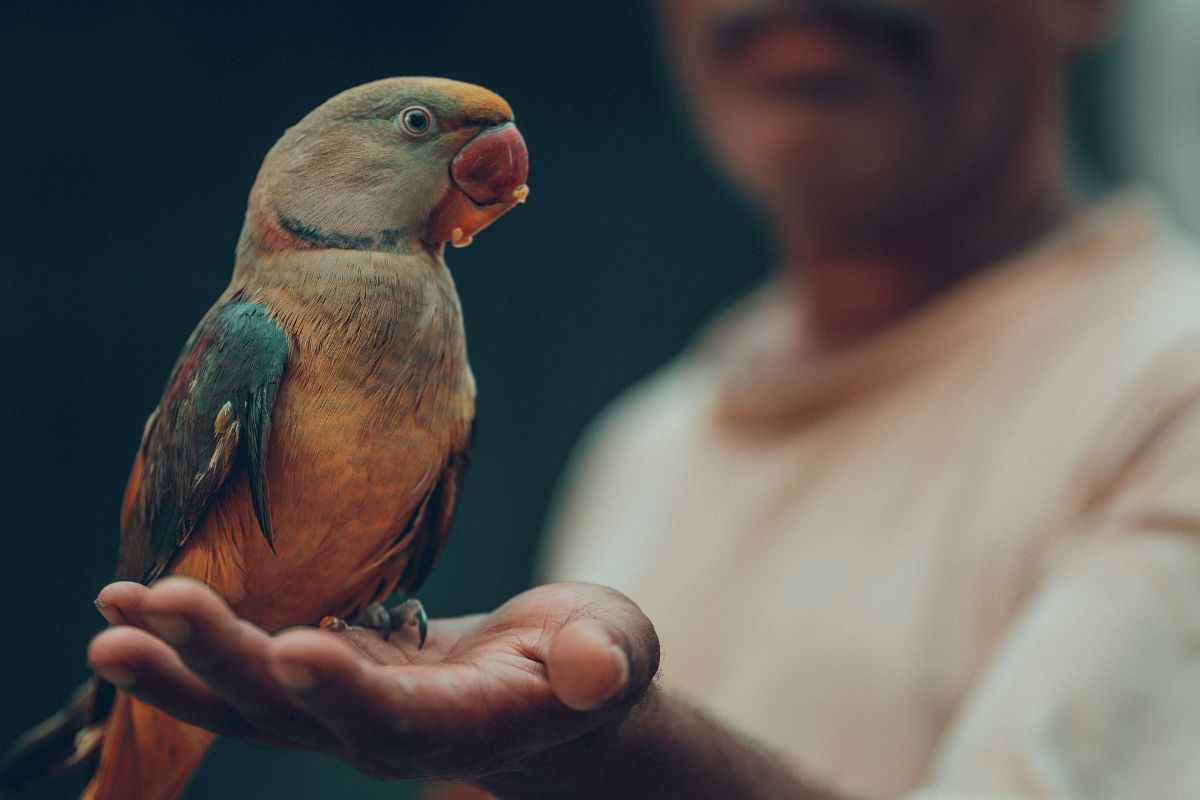
Why Birds Make Excellent Emotional Support Animals?
1. Long Lifespan
2. Social Interaction
3. Intelligence
4. Can Adjust to Small Spaces
5. Inexpensive to Feed
Birds You Can Keep as Emotional Support Animals
1. Parrot
- African Gray Parrot
- Indian Ring-Necked Parakeet
- Cockatoos
- Amazon Parrots
- Lovebirds

African Gray Parrot
- Age Span: 30 years or more.
- Skills: Excellent communicators, talented at mimicking human speech and sounds.
- Temperament: Highly sociable, affectionate, enthusiastic, easily adaptable to new environments.
- Weight: Medium-sized, typically around 400 grams.
- Color: Predominantly gray with a bright red tail.
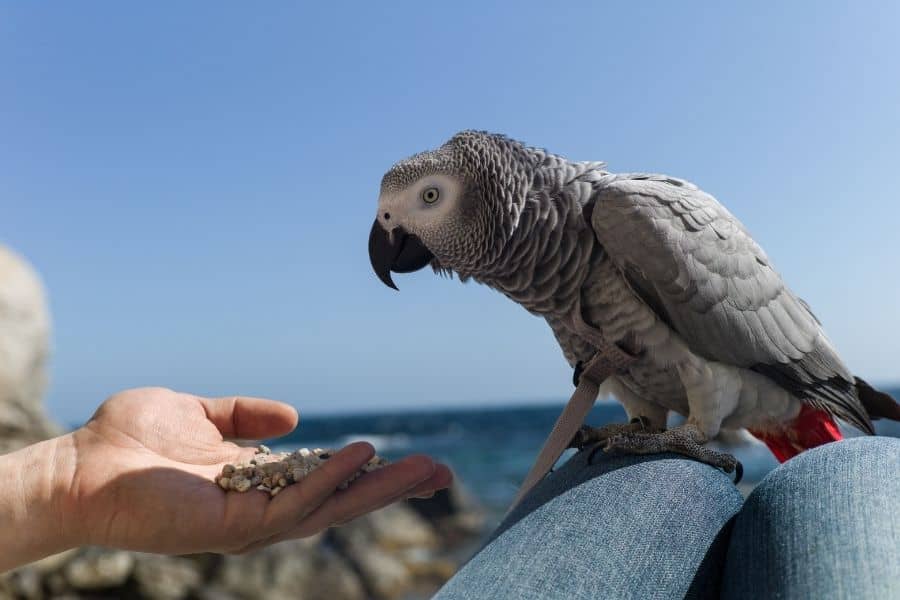
Indian Ring-Necked Parakeet
- Age Span: 30 years or more.
- Skills: Skilled vocal communicators, excellent at whistling, can mimic speech.
- Temperament: Friendly, social, enjoys interaction, can be independent.
- Weight: Medium-sized, typically around 120 grams.
- Color: Mostly found in blue or green, with a distinctive ring around the neck.
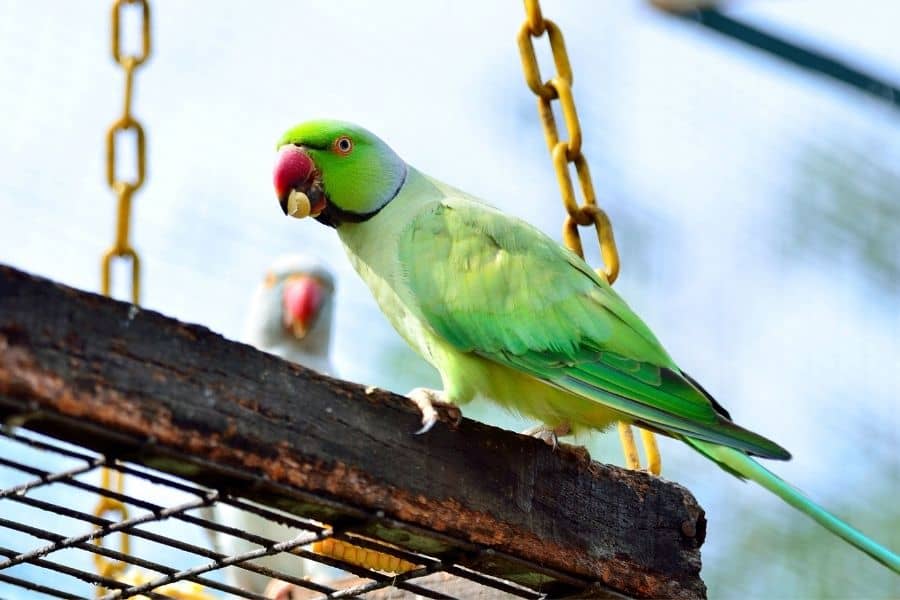
Cockatoos
- Age Span: 30 years or more.
- Skills: Good vocal communicators, can mimic sounds and words, highly intelligent.
- Temperament: Highly sociable, friendly but demanding, requires attention and interaction.
- Weight: Medium to large-sized, typically ranging from 300 to 900 grams.
- Color: Available in black, gray, pink, and white colors.
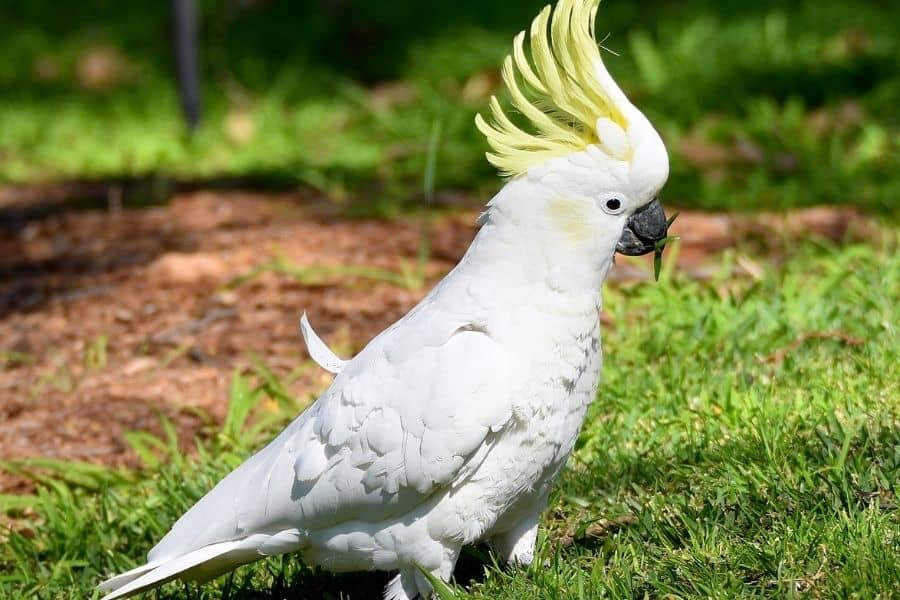
Amazon Parrots
- Age Span: 30 years or more.
- Skills: Loud and playful, capable of singing songs with proper training, good at mimicking speech.
- Temperament: Outgoing, bold, comical, enjoys being the center of attention.
- Weight: Medium-sized, typically around 400 to 600 grams.
- Color: Predominantly green with variations depending on the species.

Lovebirds
- Age Span: Up to 20 years.
- Skills: Relatively quiet, capable of forming strong bonds with their owners, good at mimicking simple sounds.
- Temperament: Charming, loving, cheerful, doesn’t require a mate to stay happy.
- Weight: Small-sized, typically around 50 grams.
- Color: Very colorful with a variety of vibrant hues such as green, yellow, orange, and blue.
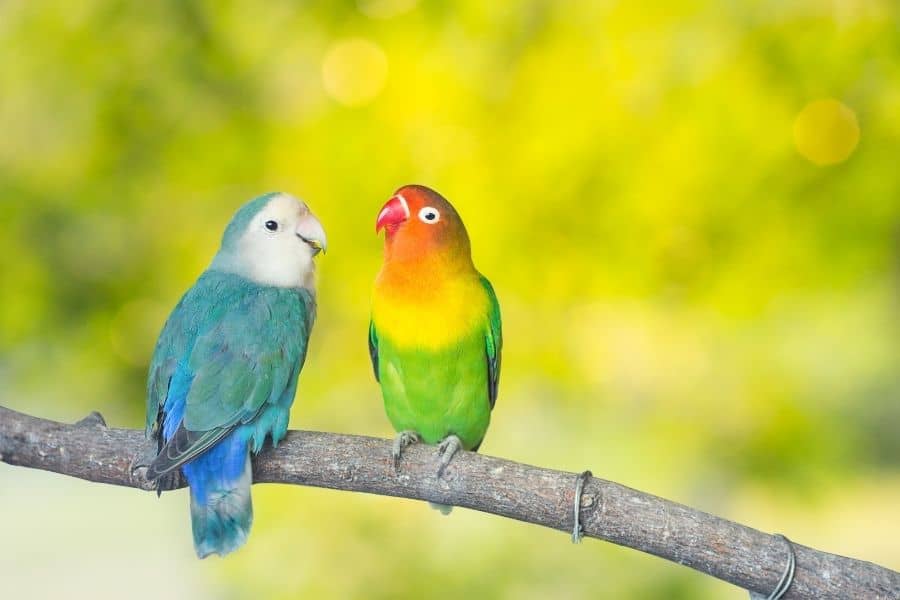
2. Canaries

3. Finches

4. Dove

5. Pigeons

The Bottom Line
Just like emotional support dogs and cats, emotional support birds can play a crucial role in healing the souls of individuals with mental health challenges. Birds like parrots have a natural ability to speak, making them excellent companions who can keep their owners engaged with training activities. While birds may not be furry, their charming personalities and beautiful feathers make them unique and lovable pets. They also enjoy being groomed by their owners, strengthening the bond between them. If you’re considering a bird as an ESA, it could be a great choice for you.
Frequently Asked Questions
How To Register My Bird As An Emotional Support Animal?
Are All Types Of Birds Suitable As Emotional Support Animals?
What Documentation Is Required To Keep A Bird As An Emotional Support Animal?
An ESA letter from a mental health professional is typically all that’s needed. This letter is essential for housing accommodations and can assist in securing other legal protections for your bird.
Is Training Necessary For A Bird To Be An Emotional Support Animal?
Do Birds Provide The Same Level Of Emotional Support As Dogs Or Cats?
Do Birds Help Reduce Symptoms Of Anxiety And Depression?
What Species Of Birds Are Easiest To Care For As Emotional Support Animals?
Can Birds Sense Human Emotions Like Dogs Do?
Are There Any Legal Protections For Birds As Emotional Support Animals?
Yes, under the Fair Housing Act, birds with an ESA letter are entitled to housing accommodations even in pet-free residences. Although laws for other public spaces can vary, the ESA letter still helps establish their status for housing accommodations.
How Long Do Emotional Support Birds Typically Live?
Do Birds Require Any Special Care As Emotional Support Animals?
Can Children Have Birds As Emotional Support Animals?
How Do You Bond With A Bird To Make It A More Effective Esa?
Do Emotional Support Birds Have To Wear Identification?
Do Parakeets Help With Anxiety?
Post Author
Prince Sharma
Related Articles
Can a Turtle Be an Emotional Support Animal?
Can a Turtle Be an Emotional Support Animal? Yes—Here’s How!Yes, a turtle can be an emotional support animal (ESA) if it provides comfort and emotional stability to its owner. While turtles may not offer the same level of interaction as dogs or cats,...
Is a Fox Terrier the Right Emotional Support Dog for You?
Is a Fox Terrier the Right Emotional Support Dog for You?Fox Terriers can be your perfect emotional support animal, offering unmatched comfort and companionship if you're dealing with emotional or mental health challenges. To officially make your Fox...
Can Your Tenant Own an Alligator as an Emotional Support Animal?
Can Your Tenant Own an Alligator as an Emotional Support Animal?Yes, an alligator can become an emotional support animal (ESA) if a licensed professional provides an ESA letter. However, due to safety concerns, many landlords and states may restrict...
Live Free with Your ESA!
An ESA Letter Unlocks Freedom!





